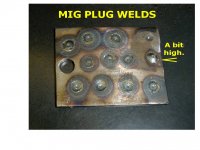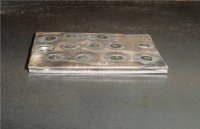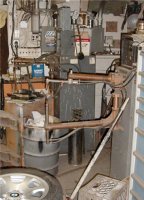cal csl
Member
- Messages
- 27
- Reaction score
- 0
Hi guys,
after spending hours of trawling through these forums for info on the rebuild. Thought it was time I started to make some posts on the progress. As we all know nothing is as simple as it seems with the E9 and ignorance is bliss. It started out with a replacement of the nose (my bad oops) and the fenders. I expected to find some rust gremlins underneath to what extent was to reveal itself as i explored.
My research trip found that the rockers were mostly in really good condition except for up the front around the A pillars. The rear of the car was very tidy showing nothing serious in all the common rust spots. The front floors were had and looked like a rusted patch work quilt. There was some rust in the fire wall where the wheel arches attach. The bottoms of the A pillars where looking sad. The wheel arches had rusted along the tops and been bronzed up in places (nice).
I share the car with my dad who used to do club meets in it back in the 80's. Fortunately back then my dad had bought a fair bit NOS (just new stock back then) replacement panels to do the resto but never got around to doing it.
I have so far:
- stripped the car and removed everything up to the firewall,
- replaced the rusted sections of the firewall,
- repaired the sills around the A pillars
- Replaced the A pillars and the internal panels they attach to with NOS
I am tig welding everything as I find it gives a cleaner weld and I am also reinforcing all the seams.
Next is to do the front floors that I ordered in from mike in the States.
I will post some flicks as shortly
after spending hours of trawling through these forums for info on the rebuild. Thought it was time I started to make some posts on the progress. As we all know nothing is as simple as it seems with the E9 and ignorance is bliss. It started out with a replacement of the nose (my bad oops) and the fenders. I expected to find some rust gremlins underneath to what extent was to reveal itself as i explored.
My research trip found that the rockers were mostly in really good condition except for up the front around the A pillars. The rear of the car was very tidy showing nothing serious in all the common rust spots. The front floors were had and looked like a rusted patch work quilt. There was some rust in the fire wall where the wheel arches attach. The bottoms of the A pillars where looking sad. The wheel arches had rusted along the tops and been bronzed up in places (nice).
I share the car with my dad who used to do club meets in it back in the 80's. Fortunately back then my dad had bought a fair bit NOS (just new stock back then) replacement panels to do the resto but never got around to doing it.
I have so far:
- stripped the car and removed everything up to the firewall,
- replaced the rusted sections of the firewall,
- repaired the sills around the A pillars
- Replaced the A pillars and the internal panels they attach to with NOS
I am tig welding everything as I find it gives a cleaner weld and I am also reinforcing all the seams.
Next is to do the front floors that I ordered in from mike in the States.
I will post some flicks as shortly
Last edited:












